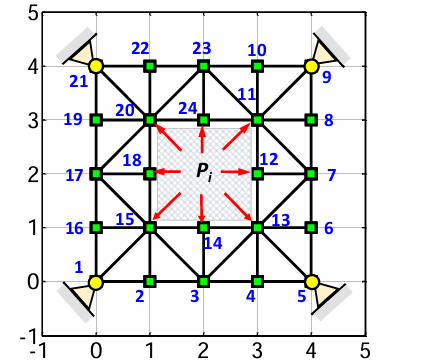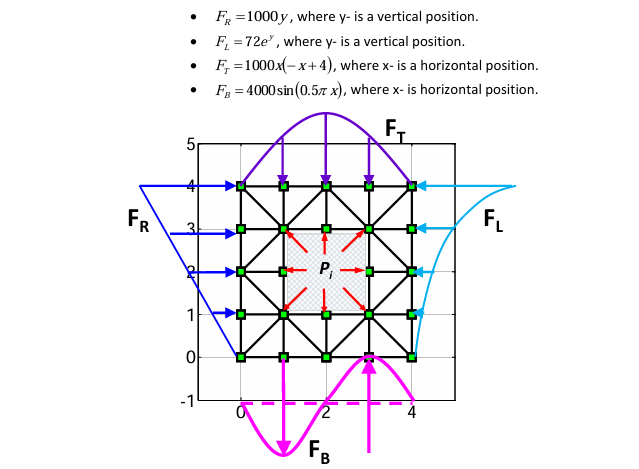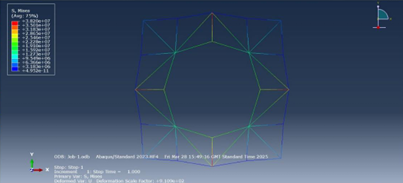FEA of Pressurized Truss Structure
MATLAB vs ABAQUS comparison, truss optimization, and pressure capacity enhancement.

🔧 Overview
Using MATLAB and ABAQUS, I simulated a 2×2×1 m³ steel containment truss structure subjected to internal pressure. I compared solver outputs, identified redundant members, and optimized the structure through reinforcement and material changes.
🎯 Objectives
- Simulate internal pressure loading using Direct Stiffness Method (MATLAB)
- Validate results against ABAQUS (displacement/stress)
- Identify and remove redundant trusses
- Apply roller supports to reduce deformation
- Explore material substitutions (hollow/square trusses)
- Simulate variable external loads (FR, FL, FT, FB)

Applied variable external loads (FR, FL, FT, FB)

Stress distribution under internal pressure
.png)
Optimized structure after redundant element removal
🛠️ Tools & Techniques
- MATLAB: 2D Truss FEA
- ABAQUS: Stress contour plots, mesh simulation
- Structural optimization based on displacement/stress contours
- Comparative analysis using deformation plots and graphs
📊 Key Results
- Initial max displacement: ≈ 4.39 × 10⁻⁴ m
- Post-reinforcement: Displacement reduced to 7.05 × 10⁻⁵ m
- Redundant trusses removed: No effect on structural integrity
- New max pressure: Increased from 6 kPa → 35 kPa
- Hollow/square trusses: Unviable due to high displacements (5–7 mm)
🧠 Reflections
This project showed how custom numerical solvers can rival commercial FEA tools when properly validated. I also explored structural efficiency, reinforcement techniques, and the significant impact of material selection and boundary conditions on structural performance.
← Back to Projects